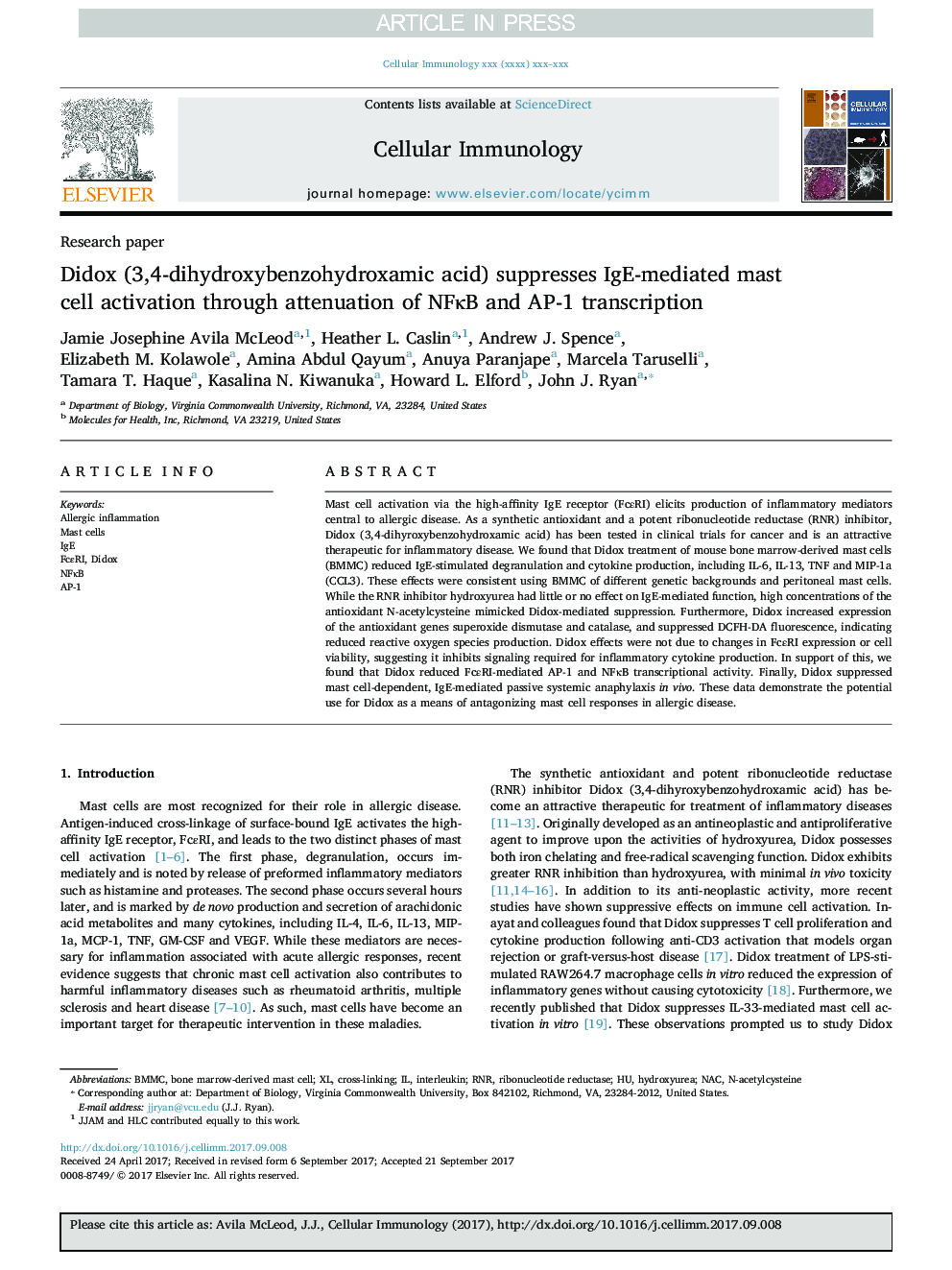| Article ID | Journal | Published Year | Pages | File Type |
|---|---|---|---|---|
| 8463619 | Cellular Immunology | 2017 | 8 Pages |
Abstract
Mast cell activation via the high-affinity IgE receptor (FcεRI) elicits production of inflammatory mediators central to allergic disease. As a synthetic antioxidant and a potent ribonucleotide reductase (RNR) inhibitor, Didox (3,4-dihyroxybenzohydroxamic acid) has been tested in clinical trials for cancer and is an attractive therapeutic for inflammatory disease. We found that Didox treatment of mouse bone marrow-derived mast cells (BMMC) reduced IgE-stimulated degranulation and cytokine production, including IL-6, IL-13, TNF and MIP-1a (CCL3). These effects were consistent using BMMC of different genetic backgrounds and peritoneal mast cells. While the RNR inhibitor hydroxyurea had little or no effect on IgE-mediated function, high concentrations of the antioxidant N-acetylcysteine mimicked Didox-mediated suppression. Furthermore, Didox increased expression of the antioxidant genes superoxide dismutase and catalase, and suppressed DCFH-DA fluorescence, indicating reduced reactive oxygen species production. Didox effects were not due to changes in FcεRI expression or cell viability, suggesting it inhibits signaling required for inflammatory cytokine production. In support of this, we found that Didox reduced FcεRI-mediated AP-1 and NFκB transcriptional activity. Finally, Didox suppressed mast cell-dependent, IgE-mediated passive systemic anaphylaxis in vivo. These data demonstrate the potential use for Didox as a means of antagonizing mast cell responses in allergic disease.
Keywords
Related Topics
Life Sciences
Biochemistry, Genetics and Molecular Biology
Cell Biology
Authors
Jamie Josephine Avila McLeod, Heather L. Caslin, Andrew J. Spence, Elizabeth M. Kolawole, Amina Abdul Qayum, Anuya Paranjape, Marcela Taruselli, Tamara T. Haque, Kasalina N. Kiwanuka, Howard L. Elford, John J. Ryan,
